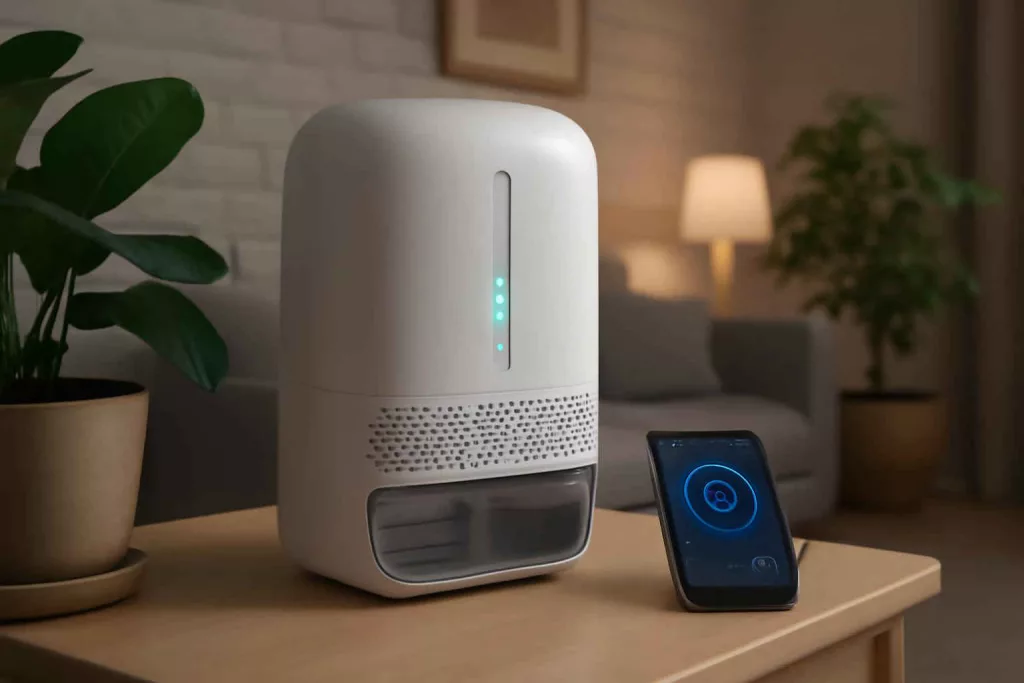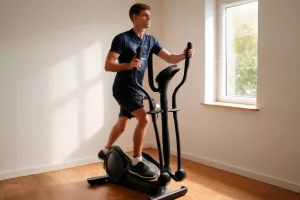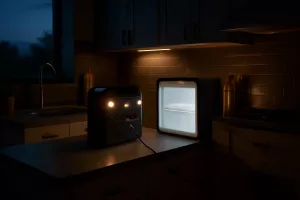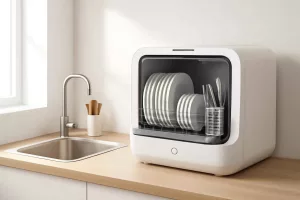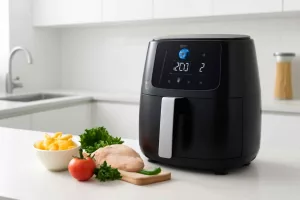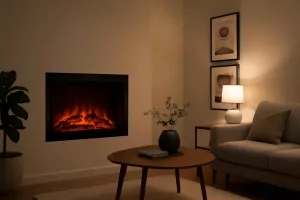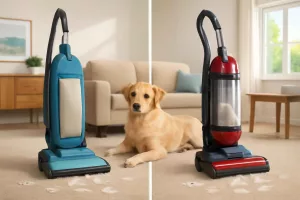Living in small apartments, basements, or tight storage areas often means dealing with excess moisture, musty odors, and potential mold growth. A reliable compact dehumidifier can efficiently remove humidity without sacrificing precious floor space. In this comprehensive guide, we’ll explore why a compact dehumidifier is an essential appliance for small spaces, how to choose the right model, and our top picks for the best mini dehumidifiers on the market. Ready to restore comfort to your room? Check out this compact dehumidifier right away.
Why You Need a Compact Dehumidifier in Small Spaces
High humidity levels in small rooms and enclosed areas can lead to a host of problems, from health concerns to damage to belongings. Excess moisture provides an ideal environment for dust mites, mold, and mildew, which can trigger allergies, asthma, and respiratory issues. With limited airflow and circulation, smaller spaces can become damp and uncomfortable more quickly than larger rooms.
Investing in a compact dehumidifier offers several benefits:
- Health Improvement: By maintaining relative humidity between 30%–50%, you reduce mold spores and dust mite populations, improving indoor air quality and reducing allergy symptoms.
- Protects Belongings: Electronics, books, clothing, and wood furniture are sensitive to moisture. A mini dehumidifier prevents warping, rust, and mildew buildup, extending the life of your items.
- Energy Efficiency: Smaller dehumidifiers use less power than full-size units while still effectively reducing moisture in compact areas. This helps keep energy bills in check.
- Enhanced Comfort: Lower humidity levels make the air feel cooler and more comfortable, reducing the reliance on air conditioning and complementing other climate control devices, such as the smart air purifiers with HEPA filters for cleaner air.
Whether you need to dehumidify a small bedroom, basement, closet, or camper van, a compact dehumidifier is the perfect tool to maintain a healthier, more comfortable environment.
How to Choose the Right Dehumidifier for Your Small Space
Selecting the ideal compact dehumidifier requires careful consideration of several factors to ensure optimal performance and convenience:
1. Coverage Area and Water Removal Capacity
Manufacturers rate dehumidifiers by the number of pints of moisture removed per 24 hours and the square footage they cover. For very small spaces (under 500 sq ft), aim for a unit rated at 10–20 pints per day. This capacity is sufficient to maintain balanced humidity without overworking the compressor.
2. Portability and Footprint
One of the advantages of compact dehumidifiers is their small footprint. Look for models with integrated handles, lightweight construction (under 10 pounds), and a slim profile that fits on shelves, nightstands, or tight corners. If you need to move the unit between rooms or levels, portability becomes crucial.
3. Noise Level
Noisy compressors can be distracting, especially in bedrooms or home offices. Dehumidifiers with a decibel (dB) rating under 45 dB operate quietly enough for most living spaces. Some models even offer silent or sleep modes that reduce fan speed and noise at night.
4. Auto Shut-Off and Continuous Drain Options
A convenient auto shut-off stops the unit when the water tank is full, preventing spills. For extended operation, continuous drain capability via a hose connection allows uninterrupted moisture removal—ideal for basements or high-humidity settings.
5. Energy Efficiency and Controls
Energy Star–rated dehumidifiers consume less electricity, saving on utility costs. Digital controls, humidistats, and programmable timers help you customize humidity targets and run cycles. For a complete small-space climate solution, pair your dehumidifier with window air conditioner units for DIY installation in warmer months.
6. Filter and Maintenance Requirements
Look for washable or replaceable filters to trap dust and allergens. Easily removable filters and accessible panels simplify cleaning—crucial for keeping performance optimal and preventing odors.
Top 5 Compact Dehumidifiers for Small Spaces
1. Pro Breeze Electric Mini Dehumidifier
The Pro Breeze Electric Mini Dehumidifier is engineered for rooms up to 2200 cubic feet, offering up to 9 ounces (250 ml) of moisture removal per day. Its thermoelectric Peltier technology ensures whisper-quiet operation, making it ideal for bedrooms and offices. Features include an auto shut-off when the 16-ounce tank is full and a compact 8×5×4-inch footprint with a built-in handle.
- Pros: Ultra-quiet, lightweight (1.3 lbs), energy-efficient, no compressor vibrations.
- Cons: Limited capacity for very damp areas, requires frequent emptying in high-humidity conditions.
Find this model on Amazon: Pro Breeze Electric Mini Dehumidifier.
2. hOmeLabs Small Space Dehumidifier
hOmeLabs’ 14-ounce (400 ml) small space dehumidifier can remove up to 9 ounces of water a day and covers rooms up to 2000 cubic feet. The sleek white design blends into any decor, and the quiet Peltier system operates at under 40 dB. Auto shut-off and an indicator light prevent overflow, while the reusable filter keeps the air clean.
- Pros: 2-year warranty, low noise, eco-friendly refrigerant, easy-to-clean filter.
- Cons: Short hose for continuous drain, less effective in extremely damp basements.
Purchase on Amazon: hOmeLabs Small Space Dehumidifier.
3. Eva-dry E-333 Renewable Dehumidifier
Unlike electric models, the Eva-dry E-333 uses silica gel and requires no power source. It can absorb up to 6 ounces of moisture and is renewable every 8–10 weeks by plugging into a USB port for 4–6 hours. Ideal for closets, cabinets, RVs, and small bathrooms, it operates silently and without moving parts.
- Pros: No electricity needed, silent operation, compact (5×2×3 inches).
- Cons: Limited capacity, manual regeneration required.
Buy it on Amazon: Eva-dry E-333 Renewable Dehumidifier.
4. SEAVON Compact Dehumidifier
The SEAVON Compact Dehumidifier removes up to 10 ounces of water daily and covers spaces up to 3000 cubic feet. It features a 16-ounce tank with a transparent window, auto shut-off, and a handle for easy transport. The whisper-quiet operation at 38 dB and energy-efficient Peltier design make it suitable for home offices and laundry rooms.
- Pros: Affordable, low noise, reusable filter, continuous drainage option.
- Cons: Basic controls, no digital humidistat.
Available on Amazon: SEAVON Compact Dehumidifier.
5. Ivation IVADM45 Powerful Dehumidifier
Ivation’s IVADM45 offers superior performance, extracting up to 25 pints per 24 hours in standard conditions and covering areas up to 450 sq ft. It boasts a smart humidistat, digital display, timer, auto defrost, and a 1.5-gallon tank. Though slightly larger (8×17×12 inches), the unit remains portable with casters and side handles.
- Pros: High capacity, digital controls, continuous drain, temperature display.
- Cons: Louder (50 dB), heavier (19 lbs).
Order on Amazon: Ivation IVADM45 Powerful Dehumidifier.
Installation and Maintenance Tips
Proper setup and routine upkeep are essential for keeping your compact dehumidifier running efficiently and extending its service life:
Placement and Clearance
Position the dehumidifier at least 6 inches from walls or furniture to allow adequate airflow. Slightly elevate it on a stable surface or tray to catch spills in case of overflow. Avoid placing the unit near heat sources, direct sunlight, or obstructed vents.
Filter Cleaning
Most compact units feature a washable air filter. Clean it every 2–4 weeks under running water, then let it dry completely before reinserting. A clean filter traps dust and allergens, ensuring consistent airflow and performance.
Emptying and Draining the Tank
Regularly monitor the water level indicator and empty the tank before it reaches full capacity. For continuous operation, attach a garden hose to the drainage outlet and direct the condensate to a floor drain or utility sink.
Winterization
In colder environments, empty and store the dehumidifier in a frost-free area. Allow the unit to run at least once a month to prevent mold growth inside the system.
Regular Inspections
Periodically inspect hoses, power cords, and tank seals for leaks or damage. Replace worn parts promptly to maintain efficiency and safety.
Frequently Asked Questions
Q1: What area does a compact dehumidifier cover?
Coverage varies by model and capacity. Mini dehumidifiers rated at 6–10 ounces per day typically manage spaces up to 2500–3000 cubic feet (roughly 200–300 sq ft). Always check the manufacturer’s specifications to match your room size.
Q2: Can I run a dehumidifier 24/7 safely?
Yes, most models with continuous drain capability can operate indefinitely. Ensure the hose is properly connected and the power source is secure. Auto shut-off protects against tank overflow if you use the built-in reservoir.
Q3: Besides using a dehumidifier, how can I prevent mold growth?
Improve ventilation by cracking windows, using exhaust fans, and sealing leaks around doors and windows. Regularly clean high-humidity areas like bathrooms with mold-resistant cleaners. Combining these steps with a dehumidifier yields the best results.
Conclusion
High humidity in small spaces can compromise comfort, health, and the longevity of your belongings. The right compact dehumidifier addresses moisture concerns without occupying valuable real estate. From ultra-quiet Peltier models like the Pro Breeze Electric Mini to high-capacity units like the Ivation IVADM45, there’s an option for every small room. Assess your coverage needs, noise sensitivity, and maintenance preferences, then choose the model that meets your specifications. Ready to create a healthier, drier environment? Explore these top compact dehumidifiers and enjoy fresher air in any small space.
